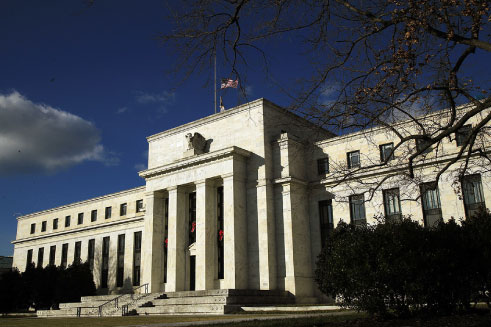Federal Reserve policymakers have halted their campaign to steadily raise interest rates, but their rate-tightening efforts might not be over, according to the minutesfrom the central bank’s January meeting.
The Fed at its January meeting left rates unchanged and signaled it was ready to stop hiking rates, sending stocks surging, though Chairman Jerome Powell gave no indication as to whether that pause will end sometime this year. The summary of deliberations from the Fed’s rate-setting committee released today shows that central bank officials don’t know yet.
Many members of the policy-setting committee “suggested that it was not yet clear” whether there will need to be “adjustments” to the central bank’s main borrowing rate later in 2019, the minutes say. Several officials argued that more hikes “might prove necessary only if inflation outcomes were higher” than currently projected.
But several other officials said if the U.S. economy continues in line with what they expect, they would “view it as appropriate” to raise rates later this year.
“In other words, if the economy remains in good shape, we haven’t necessarily seen the last of the interest rate hikes,” said Greg McBride, chief financial analyst at Bankrate.com.
Still, the document did have more specific good news for the stock market, suggesting the Fed will announce later this year a plan to stop reducing the massive stockpile of bonds that it bought in the wake of the 2008 financial crisis to spur growth. The Fed’s balance sheet reduction also has the effect of tightening credit conditions, alongside its rate hikes.
“Almost all participants thought that it would be desirable to announce before too long a plan to stop reducing the Federal Reserve’s asset holdings later this year,” according to the minutes. “Such an announcement would provide more certainty about the process for completing the normalization of the size of the Federal Reserve’s balance sheet.”
The Fed’s decision to pause its rate hike campaign in January, after signaling in December that as many as two more increases could be coming in 2019, sparked questions among investors about whether the economic outlook had changed significantly in the intervening weeks or if the central bank was merely reacting to wild swings in the stock market.
The central bank minutes say that indeed the outlook “had become more uncertain” since December, while nodding to the fact that “financial market volatility had remained elevated over the intermeeting period.” Officials also cited other factors: slower growth, deteriorating consumer and business confidence, trade tensions and the partial government shutdown.
But clearly financial markets were top of mind for Fed officials, with the views of “market participants” garnering several mentions.
“Considerations of [rising] risks drove the committee to emphasize its ‘patient’ mantra with respect to future rate hikes,” said Curt Long, chief economist for the National Association of Federally-Insured Credit Unions. “That is certainly a nod to jittery markets, which seem to have been comforted by the shift in tone from December.”
The Fed is willing to be patient about further hikes as it waits to determine the effects of those factors, as well as the central bank’s own interest rate hikes, on the broader economy.
“A patient approach would have the added benefit of giving policymakers an opportunity to judge the response of economic activity and inflation to the recent steps taken to normalize the stance of monetary policy,” the minutes say.
“Furthermore, a patient posture would allow time for a clearer picture of the international trade policy situation and the state of the global economy to emerge and, in particular, could allow policymakers to reach a firmer judgment about the extent and persistence of the economic slowdown in Europe and China,” they add.
The Fed also indicated worry that financial market participants misinterpreted its message in December as a lack of recognition of economic risks, with officials debating whether their aggregated projections of future rate hikes misleadingly suggested that “policy was on a preset course.”
“[M]arket participants appeared to interpret FOMC communications at the time of the December meeting as not fully appreciating the tightening of financial conditions and the associated downside risks to the U.S. economic outlook that had emerged since the fall.”
